
The Ransom Room (El Cuarto del Rescate) is a small building located in Cajamarca, Peru. It is considered to be the place where the Inca Empire came to an end with the capture and eventual execution of the Inca Emperor Atahualpa. [1]

The Ransom Room (El Cuarto del Rescate) is a small building located in Cajamarca, Peru. It is considered to be the place where the Inca Empire came to an end with the capture and eventual execution of the Inca Emperor Atahualpa. [1]
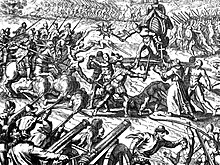
When Francisco Pizarro arrived in Cajamarca on November 15, 1532, he sent a messenger to Atahualpa, proposing they meet in the main plaza. Pizarro decided to send a friar, Vincente de Valverde, along with an interpreter (Felipillo) to speak with Atahualpa. The next day, on November 16, 1532, Friar Valverde presented himself to Atahualpa and explained through the interpreter the mysteries of Catholic religion, and that, on account of their heathenism, the pope had granted Atahualpa's kingdom to the Spaniards. Atahualpa professed not to understand the tenor of this discourse, and would not resign his kingdom, saying he would "be no man's tributary." Upon hearing this, the friar gave a Bible to Atahualpa, who, after merely observing it and turning a few pages, threw the book on the floor. Atahualpa then demanded a full account of the presence of the Spaniards in his land. At this point Pizarro and his forces decided to come out on horseback with firearms, causing many of Atahualpa's army to flee upon hearing the sounds of artillery and arquebus. Many natives died as they tried to fight against the better-armed Spaniards. Thereafter, Pizarro went on to look for Atahualpa himself, who was shielded by his faithful nobles who, in the end, were also captured by the Spaniards. [2] : 173–179
Some scholars[ who? ] have stated that Vincente de Valverde did not signal the attack on the Incan. [3]
It was during this time that Atahualpa gave orders for the execution of his half-brother, Huáscar, who he believed was an obstacle to his ruling of the empire. Atahualpa gave these orders, hoping to prevent Pizarro from carrying out his threat to "determine which of the two had best title to the sceptre of the Incas." [2] : 185
After the battle of Cajamarca, Atahualpa offered Pizarro to buy his liberty by filling the room where he was kept prisoner with gold and the two following rooms with silver, up to the level of the reach of his arm. The room was 6.70 m (22 feet) long and 5.18 m wide (17 feet) long, while the red line marking the height of the Inca's reach, was 2.75 m (9 feet) high. Atahualpa also offered to twice fill a smaller room with silver, asking for two months to do so. [2] : 183–184
The total collection of the gold, after being melted down into standard ingots, and before division amongst the Spaniards, amounted to 1,326,539 pesos de oro, worth 15,500,000 in 1847 U.S. dollars. This equates to nearly half a billion dollars in today's money. The silver amounted to 51,610 marks. Some of the most beautiful articles were saved for the emperor's royal fifth, which included vases, imitations of plants and animals, and a fountain. [2] : 195–197
The Inca now demanded to be set free. Diego de Almagro demanded the Inca's death, necessary for peace and in the interests of the Spanish crown, though Pizarro and Hernando de Soto were reluctant. Pizarro finally conceded to a trial, acting as a judge alongside Almagro. The twelve charges included usurpation of the crown, assassination of his brother Huáscar, squandering public revenues, idolatry, adultery, and attempting to incite an insurrection. He was found guilty and sentenced to be burned alive that night. Father Vincente de Valverde signed the judgement stating, "in his opinion, the Inca, at all events, deserved death." [2] : 199, 202–203
Atahualpa turned to Pizarro and exclaimed, "What have I done, or my children, that I should meet such a fate? And from your hands, too, you, who have met with friendship and kindness from my people, with whom I have shared my treasures, who have received nothing but benefits from my hands!" [2] : 203
Two hours after sunset on 29 Aug. 1533, the Inca was prepared to be burned at the stake, when Friar Valverde offered death by garrote, if Atahualpa would consent to be baptized. The Inca agreed, assuming the name Francisco Atahualpa in honor of Francisco Pizarro. [4] His last requests to Pizarro were that his remains be transported to Quito, and that he have compassion on his children. [2] : 204
After Atahualpa was executed, the end of the "Tahuantinsuyo" (Inca Empire) was near, with the Spanish conquest of Peru. [2] : 205
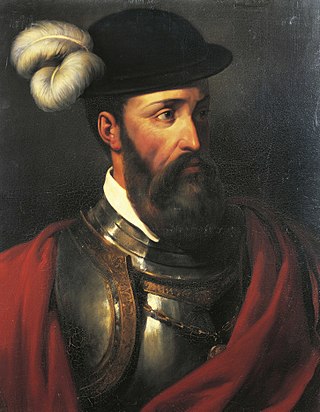
Francisco Pizarro, Marquess of the Atabillos was a Spanish conquistador, best known for his expeditions that led to the Spanish conquest of the Inca Empire.

Huáscar Inca also Guazcar was Sapa Inca of the Inca Empire from 1527 to 1532. He succeeded his father, Huayna Capac and his brother Ninan Cuyochi, both of whom died of smallpox while campaigning near Quito.

Atahualpa, also Atawallpa (Quechua), Atabalica, Atahuallpa, Atabalipa, was the last effective Incan emperor before his capture and execution during the Spanish conquest.

Gonzalo Pizarro y Alonso was a Spanish conquistador. He was the younger paternal half brother of Francisco Pizarro, who led the Spanish conquest of the Inca Empire. Pizarro was the illegitimate son of Gonzalo Pizarro y Rodríguez de Aguilar (1446–1522), who, as an infantry colonel, served under Gonzalo Fernández de Córdoba during the Italian Wars. He was also the younger paternal half brother of Hernándo Pizarro y de Vargas and the older paternal full brother of Juan Pizarro y Alonso.

Cajamarca, also known by the Quechua name, Kashamarka, is the capital and largest city of the Cajamarca Region as well as an important cultural and commercial center in the northern Andes. It is located in the northern highlands of Peru at approximately 2,750 m (8,900 ft) above sea level in the valley of the Mashcon river. Cajamarca had an estimated population of about 226,031 inhabitants in 2015, making it the 13th largest city in Peru.
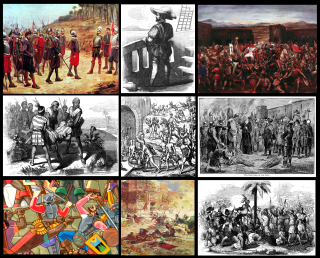
The Spanish conquest of the Inca Empire, also known as the Conquest of Peru, was one of the most important campaigns in the Spanish colonization of the Americas. After years of preliminary exploration and military skirmishes, 168 Spanish soldiers under conquistador Francisco Pizarro, along with his brothers in arms and their indigenous allies, captured the Sapa Inca Atahualpa in the 1532 Battle of Cajamarca. It was the first step in a long campaign that took decades of fighting but ended in Spanish victory in 1572 and colonization of the region as the Viceroyalty of Peru. The conquest of the Inca Empire, led to spin-off campaigns into present-day Chile and Colombia, as well as expeditions to the Amazon Basin and surrounding rainforest.

Manco Inca Yupanqui was the founder and monarch of the independent Neo-Inca State in Vilcabamba, although he was originally a puppet Inca Emperor installed by the Spaniards. He was also known as "Manco II" and "Manco Cápac II". He was one of the sons of Huayna Capac and a younger brother of Huascar.

Vicente de Valverde y Alvarez de Toledo, O.P., or Vincent de Valle Viridi was a Spanish Dominican friar who was involved in the Conquest of the Americas, later becoming the Bishop of Cuzco. He became the first resident bishop in South America. He was born in Oropesa, Spain, about 1495 and most sources claim he died on Puná Island, now part of Ecuador, in 1541, at the hands of the indigenous peoples.
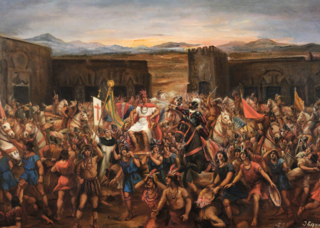
The Battle of Cajamarca also spelled Cajamalca was the ambush and seizure of the Inca ruler Atahualpa by a small Spanish force led by Francisco Pizarro, on November 16, 1532. The Spanish killed thousands of Atahualpa's counselors, commanders, and unarmed attendants in the great plaza of Cajamarca, and caused his armed host outside the town to flee. The capture of Atahualpa marked the opening stage of the conquest of the pre-Columbian civilization of Peru.
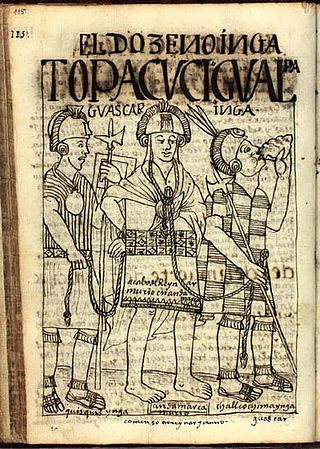
Quizquiz or Quisquis was, along with Chalcuchimac and Rumiñawi, one of Atahualpa's leading generals. In April 1532, along with his companions, Quizquiz led the armies of Atahualpa to victory in the battles of Mullihambato, Chimborazo and Quipaipan, where he, along with Chalkuchimac defeated and captured Huáscar and promptly killed his family, seizing capital Cuzco. Quizquiz later commanded Atahualpa's troops in the battles of Vilcaconga, Cuzco and Maraycalla (1534), ultimately being bested by the Spanish forces in both accounts.
The Battle of Chimborazo was among the first confrontations in the War of the two brothers, a struggle between Huáscar and Atahualpa for power over the Inca Empire. Atahualpa won, having the more capable generals; he drove Huáscar back onto the defensive.
The Battle of Quipaipán was the decisive battle of the Inca Civil War between the brothers Atahualpa and Huáscar. After the victory at Chimborazo, Atahualpa stopped in Cajamarca as his generals followed Huáscar to the south. The second confrontation took place at Quipaipán, where Huáscar was again defeated, his army disbanded, Huáscar himself captured and - save for the intervention of Pizarro - the entire Inca empire nearly fallen to Atahualpa.
The Treasure of the Llanganates refers to a huge amount of gold, silver, platinum and electrum artifacts, as well as other treasures, supposedly hidden deep within the Llanganates mountain range of Ecuador by the Inca general Rumiñahui.

Felipillo was a native Amerindian interpreter who accompanied Spanish conquistadors Francisco Pizarro and Diego de Almagro on their various expeditions to Peru during their conquest of the Inca Empire. His real name is not known.
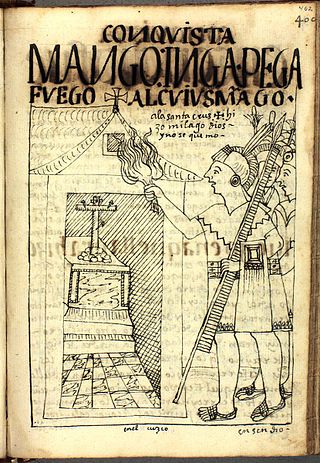
The 10 month siege of Cusco by the Inca army under the command of Sapa Inca Manco Inca Yupanqui started on 6 May 1536 and ended in March 1537. The city was held by a garrison of Spanish conquistadors and Indian auxiliaries led by Hernando Pizarro. The Incas hoped to restore their empire (1438–1533) with this action, but it was ultimately unsuccessful.
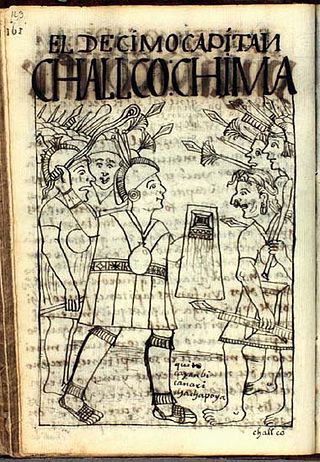
Chalcuchima was, along with Quizquiz and Rumiñawi one of the leading Inca generals of the north and a supporter of Atahualpa, for whom he had won five battles against the Spaniards.
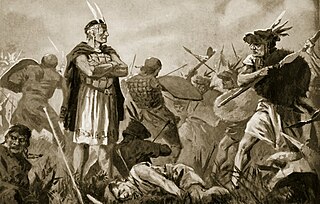
The Inca Civil War, also known as the Inca Dynastic War, the Inca War of Succession, or, sometimes, the War of the Two Brothers, was fought between half-brothers Huáscar and Atahualpa, sons of Huayna Capac, over succession to the throne of the Inca Empire. The war followed Huayna Capac's death.
The Battle of Ollantaytambo took place in January 1537, between the forces of Inca emperor Manco Inca and a Spanish expedition led by Hernando Pizarro during the Spanish conquest of Peru. A former ally of the Spaniards, Manco Inca rebelled in May 1536, and besieged a Spanish garrison in the city of Cusco. To end the stand-off, the besieged mounted a raid against the emperor's headquarters in the town of Ollantaytambo. The expedition, commanded by Hernando Pizarro, included 100 Spaniards and some 30,000 Indian auxiliaries against an Inca army more than 30,000 strong.
The Battle of Vilcaconga took place during the Spanish conquest of the Inca Empire from November 8–9, 1533. The Spanish won a convincing victory, suffering minimal casualties.

Bartolomé Ruiz was a Spanish conquistador. He started his career as Christopher Columbus's pilot, before joining Francisco Pizarro and Diego de Almagro on their conquest of Peru. Ruiz was a member of the Famous Thirteen. He is also the first European to see Ecuador, and the first to land and begin European exploration there.